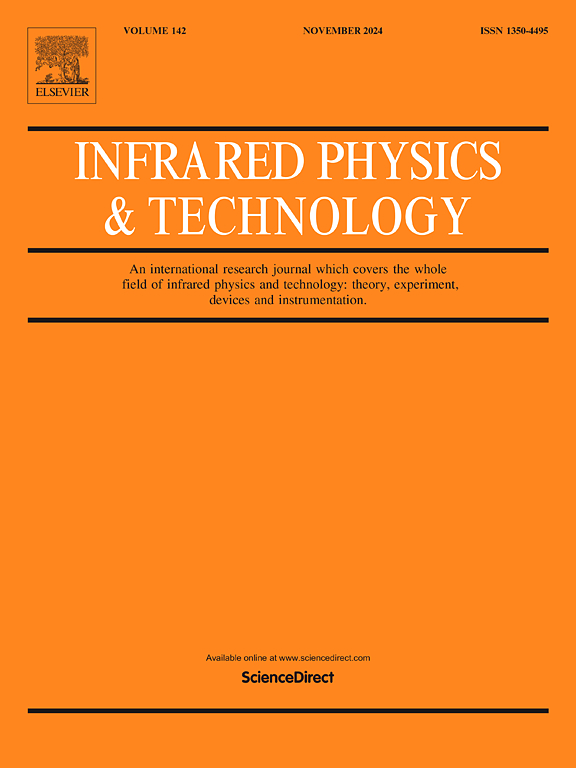Based on SESAM 2 μm band Tm:YLF continuous-wave mode-locked laser
IF 3.4
3区 物理与天体物理
Q2 INSTRUMENTS & INSTRUMENTATION
引用次数: 0
Abstract
This paper is based on Semiconductor Saturable Absorber Mirror as passive mode-locking elements to construct a mode-locked laser, achieving stable continuous wave mode-locked laser output in the 2 μm wavelength band through efficient end-pumping of Tm: YLF crystals. First, the continuous mode-locking threshold conditions are obtained through theoretical analysis and calculation, and the laser cavity length parameters are designed using ABCD matrix theory to control the astigmatism of the resonator and the distribution size of the transverse mode spot at each position. A ’W’ shaped folded laser resonator was designed, and at a cavity length of 1.857 m, stable mode-locked laser output was obtained when the absorbed pump power exceeded 12.24 W. When the maximum pump power was 20.17 W, the maximum average output power of the mode-locked laser was 1.52 W. The pulse width was 1.716 ps with the repetition frequency of 81 MHz, and the beam quality M2 is 1.51. The results indicate that the Tm: YLF crystal can achieve relatively stable ultrashort pulse sequences, high-power output, and continuous mode-locked laser operation with high beam quality through rational design of the cavity structure.
基于SESAM 2 μm波段Tm:YLF连续波锁模激光器
本文以半导体可饱和吸收镜作为被动锁模元件,构建锁模激光器,通过Tm: YLF晶体的高效端泵浦,在2 μm波段实现稳定的连续波锁模激光输出。首先,通过理论分析和计算得到连续锁模阈值条件,并利用ABCD矩阵理论设计激光腔长参数,控制谐振腔的像散和各位置横模光斑的分布尺寸;设计了“W”型折叠激光谐振腔,在腔长1.857 m处,当吸收泵浦功率超过12.24 W时,可获得稳定的锁模激光输出。当最大泵浦功率为20.17 W时,锁模激光器的最大平均输出功率为1.52 W。脉冲宽度为1.716 ps,重复频率为81 MHz,波束质量M2为1.51。结果表明,通过合理的腔体结构设计,Tm: YLF晶体可以实现相对稳定的超短脉冲序列、高功率输出和高光束质量的连续锁模激光工作。
本文章由计算机程序翻译,如有差异,请以英文原文为准。
求助全文
约1分钟内获得全文
求助全文
来源期刊
CiteScore
5.70
自引率
12.10%
发文量
400
审稿时长
67 days
期刊介绍:
The Journal covers the entire field of infrared physics and technology: theory, experiment, application, devices and instrumentation. Infrared'' is defined as covering the near, mid and far infrared (terahertz) regions from 0.75um (750nm) to 1mm (300GHz.) Submissions in the 300GHz to 100GHz region may be accepted at the editors discretion if their content is relevant to shorter wavelengths. Submissions must be primarily concerned with and directly relevant to this spectral region.
Its core topics can be summarized as the generation, propagation and detection, of infrared radiation; the associated optics, materials and devices; and its use in all fields of science, industry, engineering and medicine.
Infrared techniques occur in many different fields, notably spectroscopy and interferometry; material characterization and processing; atmospheric physics, astronomy and space research. Scientific aspects include lasers, quantum optics, quantum electronics, image processing and semiconductor physics. Some important applications are medical diagnostics and treatment, industrial inspection and environmental monitoring.

 求助内容:
求助内容: 应助结果提醒方式:
应助结果提醒方式:


